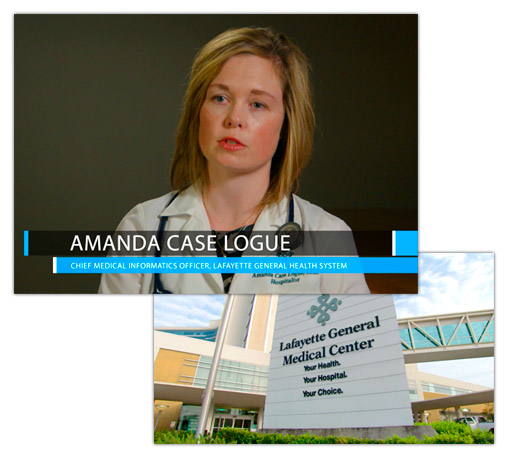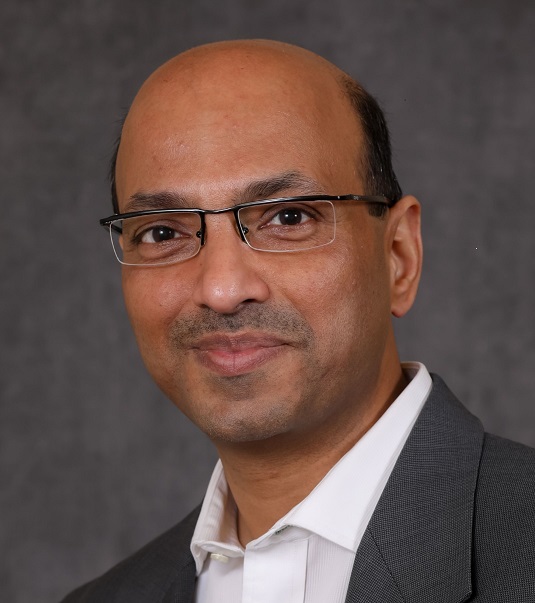This blog was written by Chhandomay Mandal, Solutions Marketing Director for EMC All-Flash Storage
 Lafayette General Health (LGH) is the largest hospital system in the Acadiana Parish, serving all of south-central Louisiana. With Lafayette General Medical Center (LGMC) as the flagship hospital, LGH also owns or manages five other area hospitals, nine professional centers, and several physician clinics. They have over 3,000 employees, and touch every aspect of healthcare in every area of the Acadiana Parish.
Lafayette General Health (LGH) is the largest hospital system in the Acadiana Parish, serving all of south-central Louisiana. With Lafayette General Medical Center (LGMC) as the flagship hospital, LGH also owns or manages five other area hospitals, nine professional centers, and several physician clinics. They have over 3,000 employees, and touch every aspect of healthcare in every area of the Acadiana Parish.
We recently sat down with their Chief Medical Informatics Officer, Amanda Case Logue, MD, as well as their IT Director, Michael Mickey, to discuss IT’s role in improving patient outcomes at LGH. What we learned was startling.
LGH uses Cerner as their Electronic Health Records (EHR) system. “It’s no secret that EHRs don’t really make you faster,” said Dr. Logue. “They’re great at collecting a lot of data, and helping improve outcomes. But they don’t necessarily make you more efficient. So this was just adding to our frustration. And we were hearing it from all of the medical staff, and we were feeling it every single day.”
Dr. Logue told us her personal story about the situation. As an internal medicine hospitalist, she rounds on patients about four or five days every month, and sees about 120 patients in that time frame. As she moved around different areas of the hospital, she was very afraid to log out. “It would take you so long to log back in,” she said. “If you needed to step away to go see a patient, you would leave your desktop up, and cross your fingers that nobody took your space when you came back. Or if someone wasn’t paying enough attention, they started working in the station without logging you out! But it was so cumbersome to try to go through that process again, you didn’t want to log out.”
Now add the “time to chart” issue on top of this time consuming login/logout process. “Time to chart” is the amount of time doctors and nurses have to wait on their end-point device for the EHR platform to pull up the patient’s treatment information. At LGH, it was 45 seconds or more!
Michael Mickey’s IT team at LGH transitioned their old systems to a new platform powered by XtremIO. They implemented a new VMware Horizon based virtual desktop infrastructure (VDI) deployment relying on XtremIO’s high performance with consistently low latency, and inline all-the-time data reduction technologies.
The result: A spectacular patient care improvement at LGH. Analysts at Storage Switzerland have chronicled the enormous success LGH is enjoying in this case study. With XtremIO, Michael and team were able to reduce the “time to chart” from 45 seconds to 3-5 seconds.
LGH estimates that this reduction in wait-time is saving a doctor visiting 40 patients per day over 80 minutes. For Dr. Logue, this translates into over 6 hours of time saved per month, and she can focus more on her Chief Medical Informatics Officer responsibilities. LGH has hundreds of doctors and nurses, so you can easily envision the benefits of this VDI deployment with XtremIO.
Dr. Logue is so impressed with the XtremIO VDI deployment that she went on-camera narrating the patient care transformation at LGH. Check out the video below (and here).
Doctors, nurses, and patients weren’t the only winners thanks to the XtremIO selection. As Storage Switzerland points out, XtremIO also allowed LGH’s IT team to do a better job of servicing application development teams. A big challenge facing the team was the time it took to recompose the master image, something that happened frequently thanks to the 40 applications that the main image houses.
Before XtremIO, a recompose operation could take hours to complete. Now with XtremIO, it takes less than one-third of the time it took previously with more than 67% improvement. This allows the infrastructure teams to push new updates out to application development teams on a much more regular basis, making sure that they are armed with the latest applications and data.
Let me close with Dr. Logue’s own words:
“We now have a speedier desktop that our doctors and our IT folks do not have to worry about. It works every single time. That has been a wonderful achievement.
Our OB physicians and our anesthesiologists like to open patients’ charts from homes to get prepared for their day, see what patients they have on their schedule, which ones are in the hospital. They also can come to the hospital, and pick up right where they left off, which is amazing for them. The doctors feel that they have a very user friendly environment. We have had a lot of instability, with a lot of parts of our health system, with growing technology, more and more hospitals to take on, more and more patients to see.
[XtremIO] is one thing that has been the most stable and reliable since we went live with it. And we are constantly complimented on it.”
Check out the details of how you can transform you applications environment with XtremIO here.
